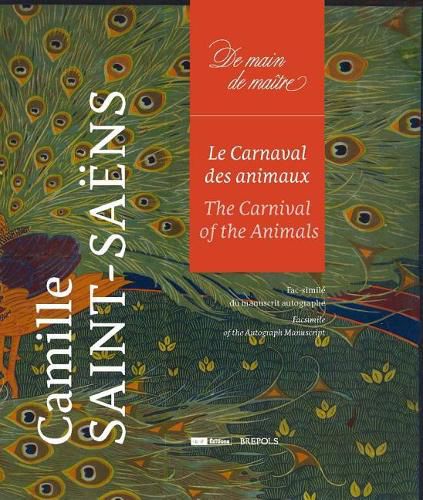Readings Newsletter
Become a Readings Member to make your shopping experience even easier.
Sign in or sign up for free!
You’re not far away from qualifying for FREE standard shipping within Australia
You’ve qualified for FREE standard shipping within Australia
The cart is loading…






Camille Saint-Saens’ extremely long career - as a virtuoso, as a brilliant pianist and organist (no fewer than seventy-six years of concerts) - and his daunting catalogue of works (close to six hundred are known) have helped shape the image of him as a tutelary figure, omnipresent in the musical landscape of his time, the uncontested master of French music, showered with honours and glory, yet the champion of what was, in the young 20th century, an outmoded aesthetic. Such an image ignores, however, that from the outset of his career, at the end of the 1850s, until the 1890s, Saint-Saens was, on the contrary, regarded in the artistic world as an agitator, as a propagator of new ideas and as an intermediary between French and Germanic cultures. Republican from his earliest days, he was a major figure in musical life, involved in many concert societies, most notably the Societe nationale de musique, which he founded in 1871. He was also a polemicist, whose quill was much feared and who used the press as his vehicle of choice, to disseminate his ideas, attract public attention, and conquer new audiences. Similarly, if the image of the ‘official’ Saint-Saens, at home with the stage and the institutions and their etiquette, has endured, that of the ‘intimate’ Saint-Saens, known by a faithful few for his sparkling conversation, his sharp humour and taste for puns, has been lost. If there is one work, in all of Saint-Saens’ musical output that supremely captures the disposition so typical of the composer, it is the Carnival of the Animals. Dedicated to the autograph manuscript of Camille Saint-Saens’ famous Carnival of the Animals (1835-1921), this volume sheds a distinctive light on the musician’s personality. Completed in February 1886, The Carnival of the Animals was created for friends and performers close to Saint-Saens and was performed about fifteen times between 1886 and 1894 to a small audience. Because Camille Saint-Saens feared that his zoological fantasy would damage his reputation, the work was published in its entirety only after his death. Since then, its immense popularity has continued to grow, so much so that it is now enjoyed by music lovers and the general public alike. Presented by Marie-Gabrielle Soret, a specialist of Camille Saint-Saens, who provides a detailed description of the work and the context of its creation, the facsimile includes the fourteen pieces of The Carnival of the Animals. It reveals the composer’s handwriting, all the performance directions as he noted them, but also to the playful animal drawings with which he decorated his score - a fish for Aquarium, the skeleton of a dinosaur for Fossiles, the pale blue pencil silhouette of a swan to illustrate the famous Swan.
$9.00 standard shipping within Australia
FREE standard shipping within Australia for orders over $100.00
Express & International shipping calculated at checkout
Camille Saint-Saens’ extremely long career - as a virtuoso, as a brilliant pianist and organist (no fewer than seventy-six years of concerts) - and his daunting catalogue of works (close to six hundred are known) have helped shape the image of him as a tutelary figure, omnipresent in the musical landscape of his time, the uncontested master of French music, showered with honours and glory, yet the champion of what was, in the young 20th century, an outmoded aesthetic. Such an image ignores, however, that from the outset of his career, at the end of the 1850s, until the 1890s, Saint-Saens was, on the contrary, regarded in the artistic world as an agitator, as a propagator of new ideas and as an intermediary between French and Germanic cultures. Republican from his earliest days, he was a major figure in musical life, involved in many concert societies, most notably the Societe nationale de musique, which he founded in 1871. He was also a polemicist, whose quill was much feared and who used the press as his vehicle of choice, to disseminate his ideas, attract public attention, and conquer new audiences. Similarly, if the image of the ‘official’ Saint-Saens, at home with the stage and the institutions and their etiquette, has endured, that of the ‘intimate’ Saint-Saens, known by a faithful few for his sparkling conversation, his sharp humour and taste for puns, has been lost. If there is one work, in all of Saint-Saens’ musical output that supremely captures the disposition so typical of the composer, it is the Carnival of the Animals. Dedicated to the autograph manuscript of Camille Saint-Saens’ famous Carnival of the Animals (1835-1921), this volume sheds a distinctive light on the musician’s personality. Completed in February 1886, The Carnival of the Animals was created for friends and performers close to Saint-Saens and was performed about fifteen times between 1886 and 1894 to a small audience. Because Camille Saint-Saens feared that his zoological fantasy would damage his reputation, the work was published in its entirety only after his death. Since then, its immense popularity has continued to grow, so much so that it is now enjoyed by music lovers and the general public alike. Presented by Marie-Gabrielle Soret, a specialist of Camille Saint-Saens, who provides a detailed description of the work and the context of its creation, the facsimile includes the fourteen pieces of The Carnival of the Animals. It reveals the composer’s handwriting, all the performance directions as he noted them, but also to the playful animal drawings with which he decorated his score - a fish for Aquarium, the skeleton of a dinosaur for Fossiles, the pale blue pencil silhouette of a swan to illustrate the famous Swan.